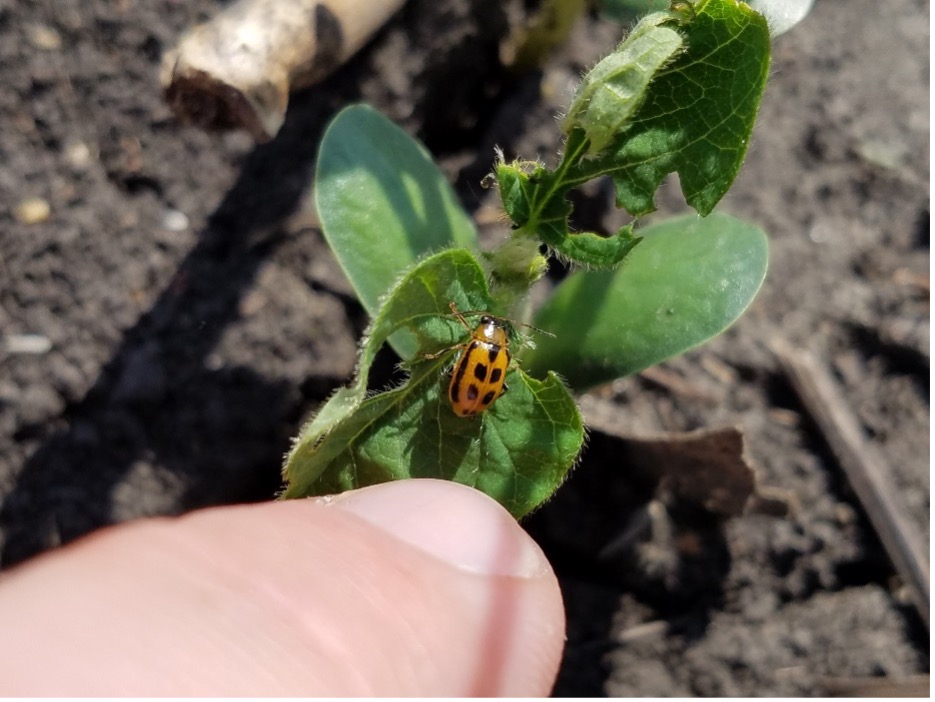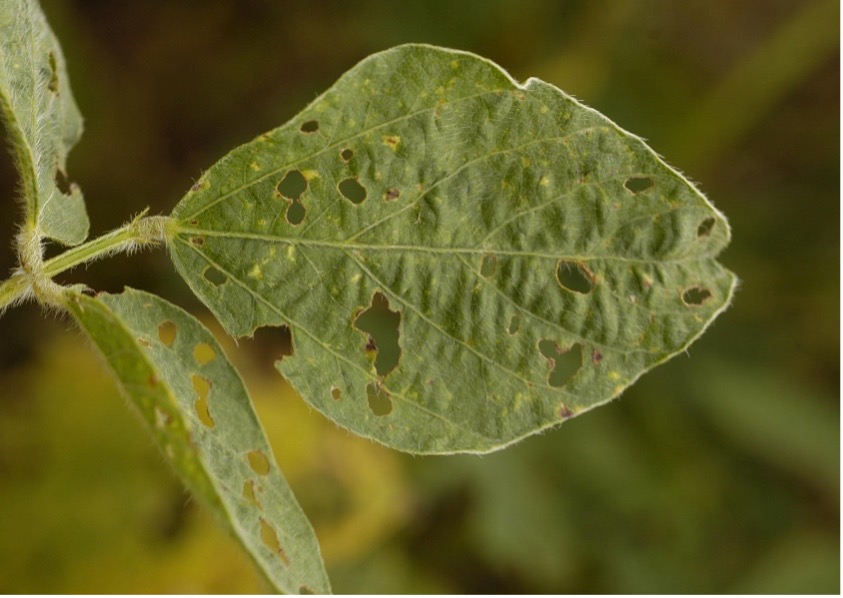Article published by Dr. Nathan Kleczewski and Dr. Nick Seiter
There are some questions that always get asked after a mild winter. One issue has come up repeatedly this season, “What will this winter do to insect pests?” Unfortunately, the answer involves a lot of ifs, ands, and buts in most cases. However, we do know a lot about how winter conditions impact the Bean Leaf Beetle (BLB). Let’s take some time to go over BLB basics, what to look for in your fields to determine risk, and treatment options.
Basics of Bean Leaf Beetle (BLB)
Adult beetles are approximately 1/4” in length and may have black markings of varying size and number on the forewings (elytra). There are many color variants of this insect, but all contain a black triangle at the neck region. Heads of all BLB are black. Adults overwinter in woodlots and soybean fields and emerge in the spring and feed on available host plants. Harsh winter temperatures can have a dramatic effect on overwintering survival. As the season progresses adults mate and females lay eggs at the base of the plants. The larvae feed below ground on soybean nodules, but this injury has not been shown to impact yield. New adults will emerge in 4-6 weeks depending on temperatures. Bean leaf beetle goes through 2 generations per year in Illinois, resulting in three distinct peaks in adult

Fig. 1. An adult bean leaf beetle feeds on a soybean seedling. Note the black triangle behind the head. (Photo: Nick Seiter, University of Illinois)
activity: emergence of overwintered adults at the beginning of the growing season (April-May), emergence of the first generation (typically in July), and emergence of the second/overwintering generation (typically in August). Overwintered beetles feed on soybean foliage for about 3 weeks. Soybean fields that emerge early relative to surrounding fields often concentrate this overwintered population resulting in higher densities and conspicuous feeding injury. As more fields come up, the beetles disperse accordingly leading to lower densities in later planted soybeans. Bean leaf beetle can transmit bead pod mottle virus (BPMV) if they come in contact with the virus by feeding on an infected plant host. If BPMV is transmitted early in vegetative development, some yield loss can occur. Late season pod feeding from second generation adults can allow moisture and pathogens to enter, reducing yield and quality. This is the greatest yield impact of this insect in Illinois.
Scouting
Start scouting for BLB as soon as seedlings have emerged, especially in areas where adults were present at noticeable levels at the end of last season. Scouting for BLB early in the season is simple as the beetles are obvious on seedlings and their damage can be easily assessed. Scout at least five locations of 20 row-ft across the field. Note the average number of beetles per plant and the level of defoliation injury observed. Note areas where damage may result in a need to replant.
The economic threshold for defoliation of soybeans prior to bloom is an average of 30% of leaf tissue removed with the beetle still present in the field. A foliar
insecticide application may be required if economic thresholds have been reached at a given soybean growth stage; however, it is uncommon for bean leaf beetle defoliation to meet an economic threshold. The more pressing yield concern from early season bean leaf beetle infestations is their potential to vector bean pod mottle virus, which is difficult to quantify. Consider an insecticide seed treatment for initial bean leaf beetle control if you have a history of yield loss from bean pod mottle virus. This disease can also be seed transmitted, though seed infection occurs at a low rate. Bean leaf beetle causes more different types of injury to soybean than any other insect pest; however, economic losses due to bean leaf beetle damage occur only sporadically in Illinois.

Fig. 2. Leaf distortion can be a symptom of bean pod mottle virus. This leaf also shows evidence of insect defoliation, which could have been caused by bean leaf beetle feeding (Photo: Nathan Kleczewski, Growmark Member Resources)


 and then
and then